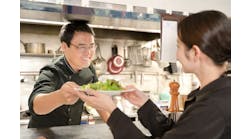I suspect because I am around millennials all the time at the university that their habits and behaviors don’t surprise me. Once in a while when we do research projects I learn something new about them.
I know a lot has been written about millennials so I won't repeat others’ observations; however, some of their behavior toward food may have an impact on your future marketing and bear repeating.
This is a group to be reckoned with. Millennials have overtaken baby boomers in population size. The U.S. Census Bureau states that millennials now make up over 25 percent of the U.S. population.
[sidebar id=1]
My interested piqued when I saw an advertisement for cell phones. It posed the question of how you use your phone, and the person gave a long list of examples, primarily the use of apps, Uber, GasBuddy, Facebook, Instagram, etc., and texting. However, the respondent didn’t mention making telephone calls. So why do we still call these devices phones?
This made me think about millennials and snacking. 96 percent of millennials say they replace a meal once a week with a snack, 58 percent say they snack four to five times a day, and convenience and taste are still the main desired attributes. 91 percent of all consumers say they eat snacks throughout the day while 8 percent say they forgo all meals entirely and just snack. Data by the Hartman Group found that immediate consumption made up 16 percent of all eating occasions for all consumers but 40 percent of eating occasions for millennials. Sounds like a meal to me!
The way millennials snack is different as well. Historically, snackers were exclusively looking for a treat: a candy bar or a salty snack. Today, snackers are looking for energy and nutrition, as well as a treat. If you can pack everything that you might get in a meal into a bar or a drink, why eat a “meal”? millennials ask.
These are not just snacks between meals, it is a new way of eating. Today, the concept of three meals a day may be as meaningful as churning your own butter. So why do we still call them snacks? They are as much a part of the modern diet as any other eating occasion.
One observation I have made with the millennials and “snacking meals” is the increased importance of packaging. First, you must understand that many (and getting to be most) millennials don’t want to go to stores. The brick and mortar stores are their last choice. Additionally, they don’t watch as much television as other generations, and when they do it is often recorded and they pass over the advertisements.
[sidebar id=2]
So packaging, both on-line and in the stores, must be more compelling than ever. Target marketing is important so your product speaks directly to the needs of millennial consumers, not for everyone, and should include more on-the-go options.
Re-evaluate your package sizes. The “snack meal” is often not shared and represents a single serving. Becoming more important are shifts in packaging sizes, including micro-packaging, individual serving packages and smaller products that cater to the millennial preference for mobility as well as speed and convenience.
The package must speak to millennials and grab their attention as they scan products online and in stores. It must attract their attention because that might be your only chance to get their attention. In more and more cases, they are not looking for your product specifically but are scanning a long list of possibilities.
When the millennials do go shopping, they most likely have not heard your advertisements. They are scanning the shelves the way they scan the internet, asking “What catches my eye?” Eye catching means make it “cool.” Since I am clearly not cool I can’t offer much insight here but Coca-Cola has done a nice job with signature cans and Frito-Lay has done a lot with interesting (cool) flavors.
Millennials are early adopters that look to products and brands with the next exciting idea. They want a brand that can quickly adapt to their rapidly evolving wants and needs, but also one that will unleash their desire for convenience and taste.
In my research I have traditionally found that the attribute “sustainable” was a wonderful idea but had little impact on purchase behavior … until now. Millennials not only value sustainability but are willing to buy and support sustainable products, especially sustainable packaging.
It’s time to think of snacking as a “lite meal” or a “replenishment meal” or anything that makes the snack more a part of the total eating behavior. Let’s call it what it is for millennials: "their meal."

